Schedule a Consultation
Life Clarity Focus
Contact UsPasadena Location Now Open
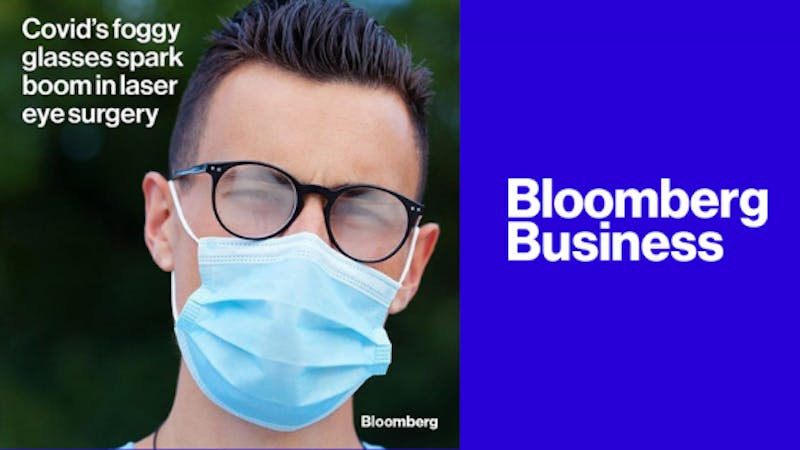
Bloomberg News 10.12.20 article reposted in full below. Direct link here.

Americans are shifting surplus cash once saved for travel and entertainment to self-improvement, like fixing their eyesight.
By Bailey Lipschultz October 12, 2020, 4:00 AM PDT
Lasik eye surgery is making a comeback.
After months of face masks fogging up their glasses and contacts drying out from all the extra Zoom meetings while working from home, Americans are fed up and are boosting demand for the corrective surgery that had waned in popularity over the past decade.
During the Covid-19 pandemic, consumers have cut back on activities, like overseas travel and entertainment, and for many that has left a big pot of cash to be spent elsewhere. A lot of that has been poured into home improvement and buying cars. And now consumers are shifting to upgrading themselves with procedures like Lasik and its starting price tag of about $4,500.
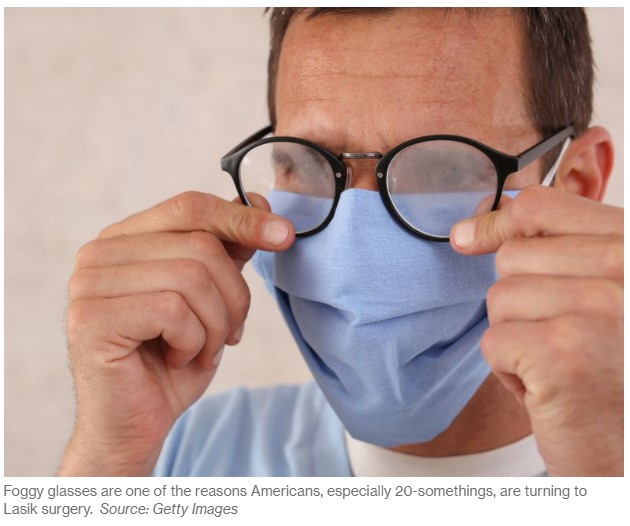
In Los Angeles, Dr. Neda Shamie, an ophthalmic surgeon, has seen a 30% jump in Lasik procedures at her practice, the Maloney-Shamie-Hura Vision Institute. It’s being driven by younger adults, with the average age of a patient falling to 34 years old, a seven-year drop from the early 2000s, she said. Her group did an informal survey of other big eye-care practices around the country, and they reported similar gains.
“People have budgets set aside for travel and are converting their travel budget into self improvement,” Shamie said. And our patients are “telling us the glasses-mask conundrum is real.”
More than 30 Lasik systems have been approved since Laser Sight Technologies Inc.’s Kremer Excimer Laser System won U.S. approval for the surgery in 1998. After an initial boom in the early 2000’s, Lasik’s growth slowed as the Great Recession reduced disposable income and the Food and Drug Administration warned of dodgy advertising practices.
Online searches in the U.S. for the procedure peaked in 2004 and had bottomed out earlier this year before spiking when the pandemic hit, according to Google Trends. The industry is now forecast to hit $4.1 billion in sales by 2027, more than doubling 2018’s total, according to consulting firm Coherent Market Insights.
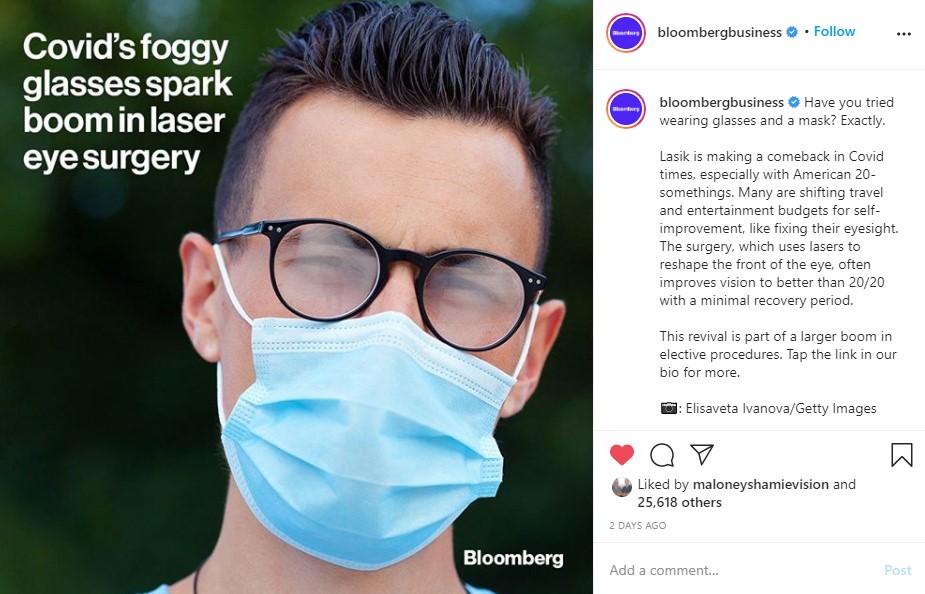
Lasik’s revival is part of an industry-wide boom in elective procedures during the pandemic. Quarantines and social-distancing caused weight gain and more self-consciousness with all the time on video chats. That’s led to spikes in Botox injections, breast implants and repairing droopy eyelids for the group of Americans who haven’t suffered financially during the Covid-triggered recession.
People who are working remotely are also more confident to go under the knife because they can recover at home, according to Jared Holz, a health strategist at Jefferies.
“You could get a lot of these procedures done without anybody you work with knowing about it,” Holz said. “Before, it was almost taboo to have to take some time off to get these elective procedures done.”
The rise in demand for smoothing wrinkle lines could boost AbbVie Inc.’s Allergan unit that sells the Botox injection. And as more invasive elective surgeries—like knee, hip and ankle replacements—pick up after a slowdown during the initial Covid wave, medical device makers such as Stryker Corp. and Zimmer Biomet Holdings Inc. will likely benefit.
BlackRock’s iShares U.S. Medical Devices ETF rebounded from a March 23 low, as investors bet on a return for elective surgeries. The ETF’s 18% gain this year is triple the return on State Street’s $24 billion Health Care Select Sector SPDR Fund and more than double that of the S&P 500 Index.
Lasik, which uses lasers to reshape the front of the eye and often improves vision to better than 20/20, has an advantage over other procedures because it has a minimal recovery period. Following a brief consultation, a patient could have surgery the same day and better vision within a few hours, Dr. Shamie said. After a post-surgery nap to let the eyes rest and heal, the patient can return to their regular routine and work the next day, she said.
Like many Americans during the pandemic, Dana Johnson, who had worn glasses since she was 6-years-old, had extra cash on hand as plans for travel and entertainment options evaporated.
“Due to not being able to eat out or vacation, I had what I felt like was a good amount of money saved to put down,” the 25-year-old nurse in Nashville, Tennessee, said in an interview. She had the procedure in late September. “Cost-wise, I will never have to pay for contacts or eye exams again, so in five to 10 years I’ll have it paid for.”
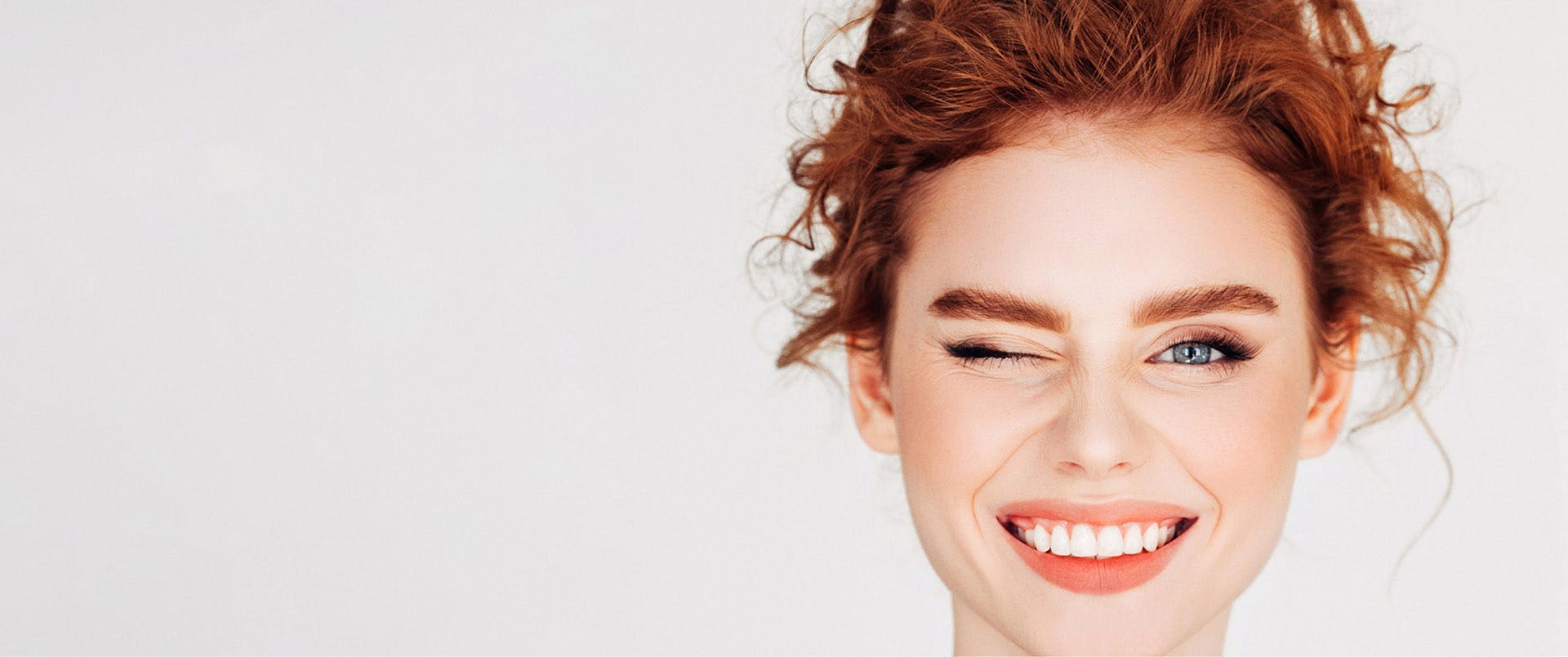

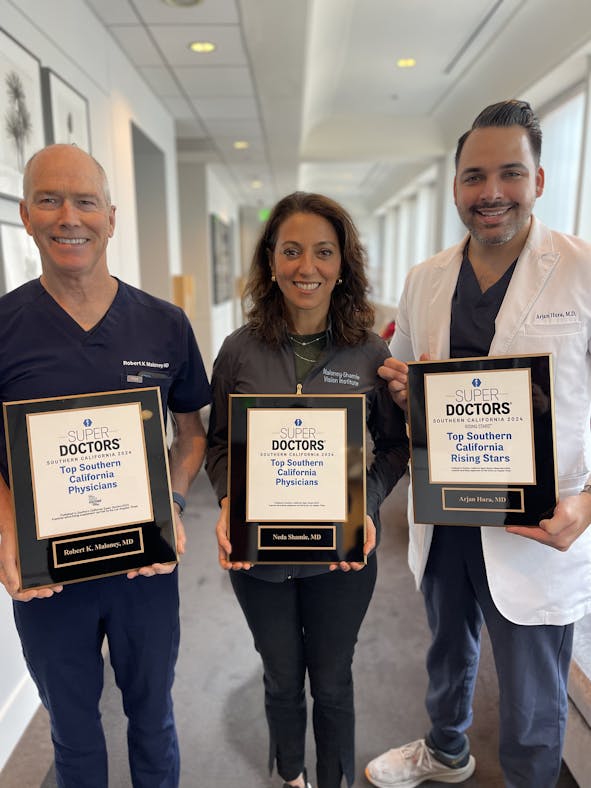


© Maloney-Shamie-Hura Vision Institute. All Rights Reserved.